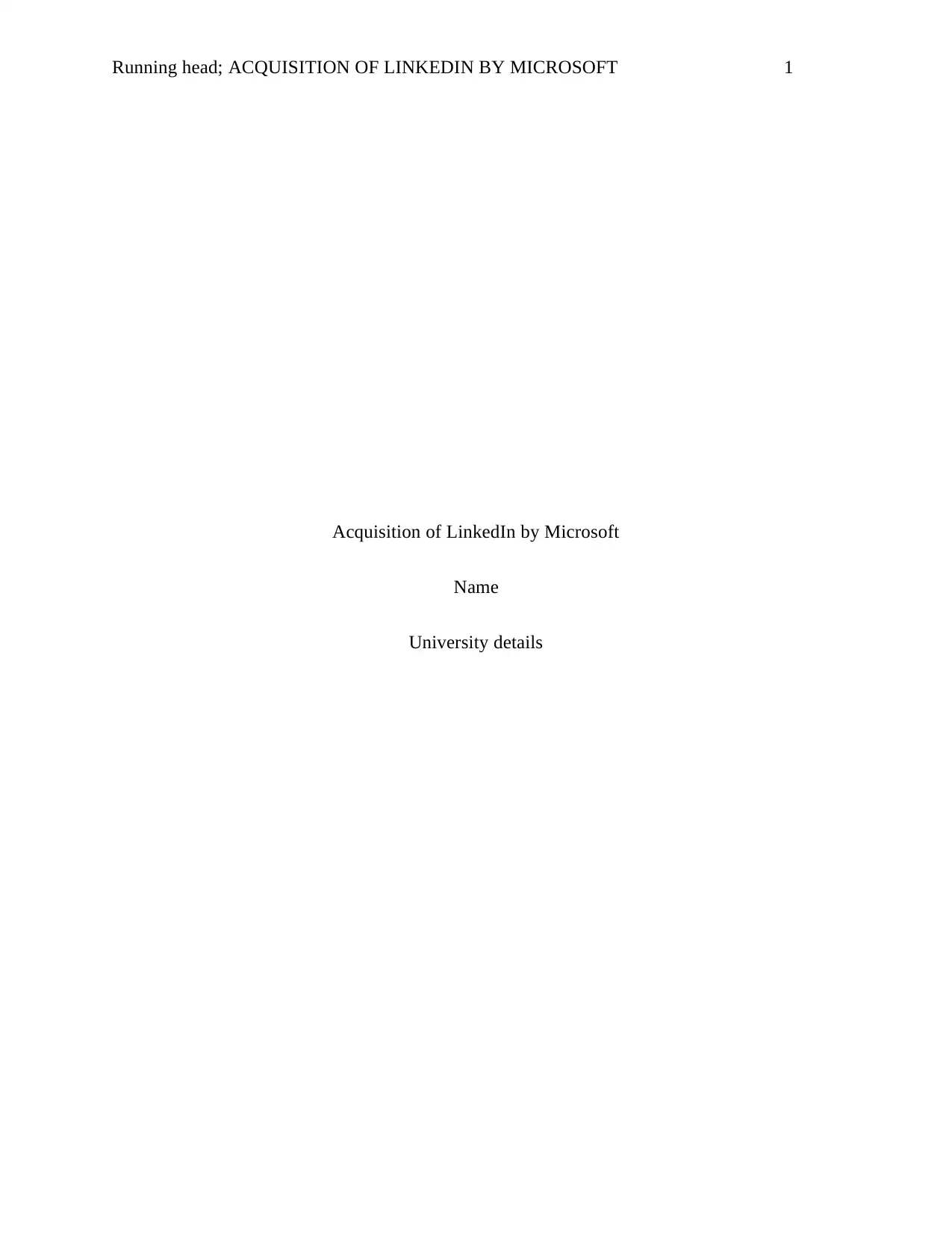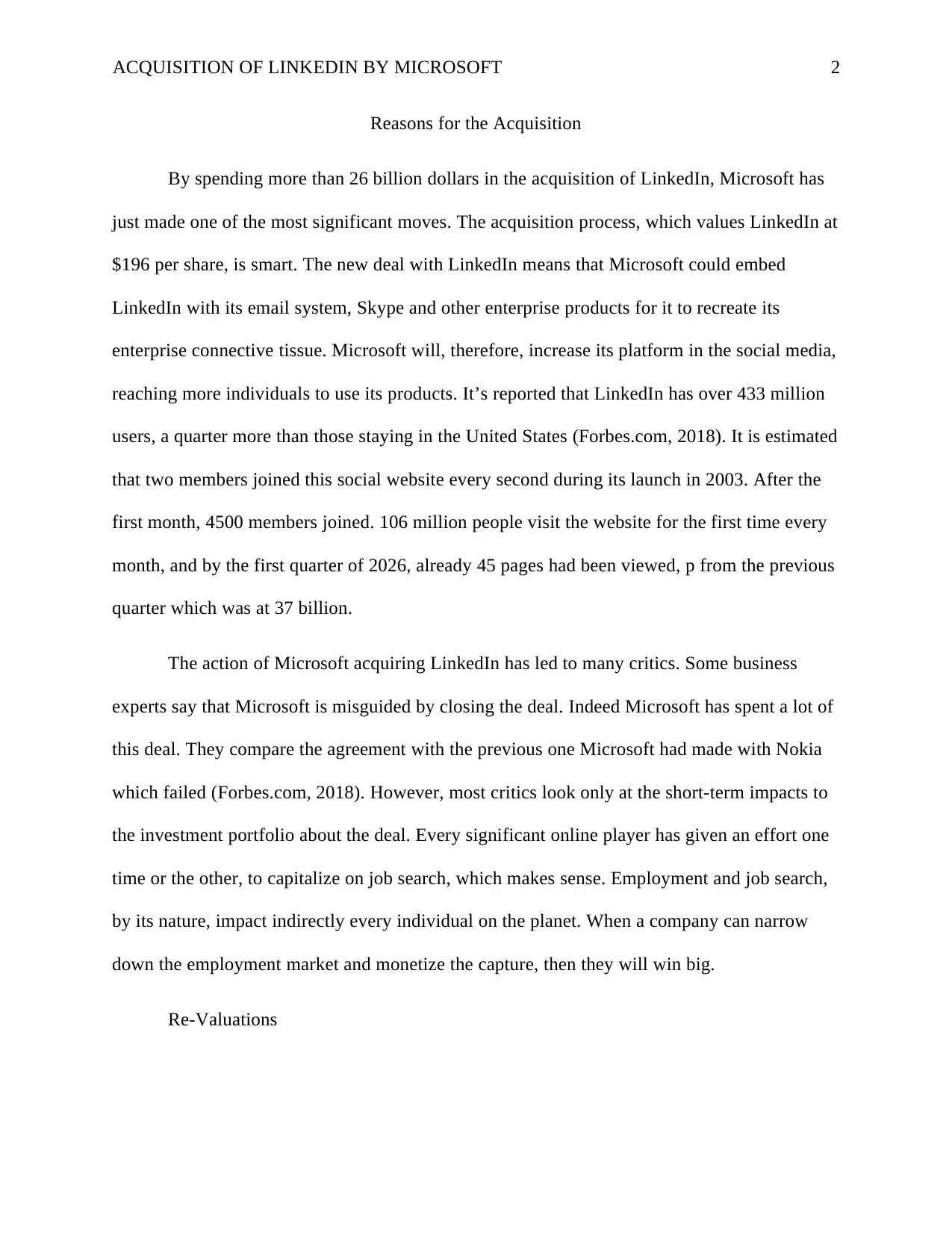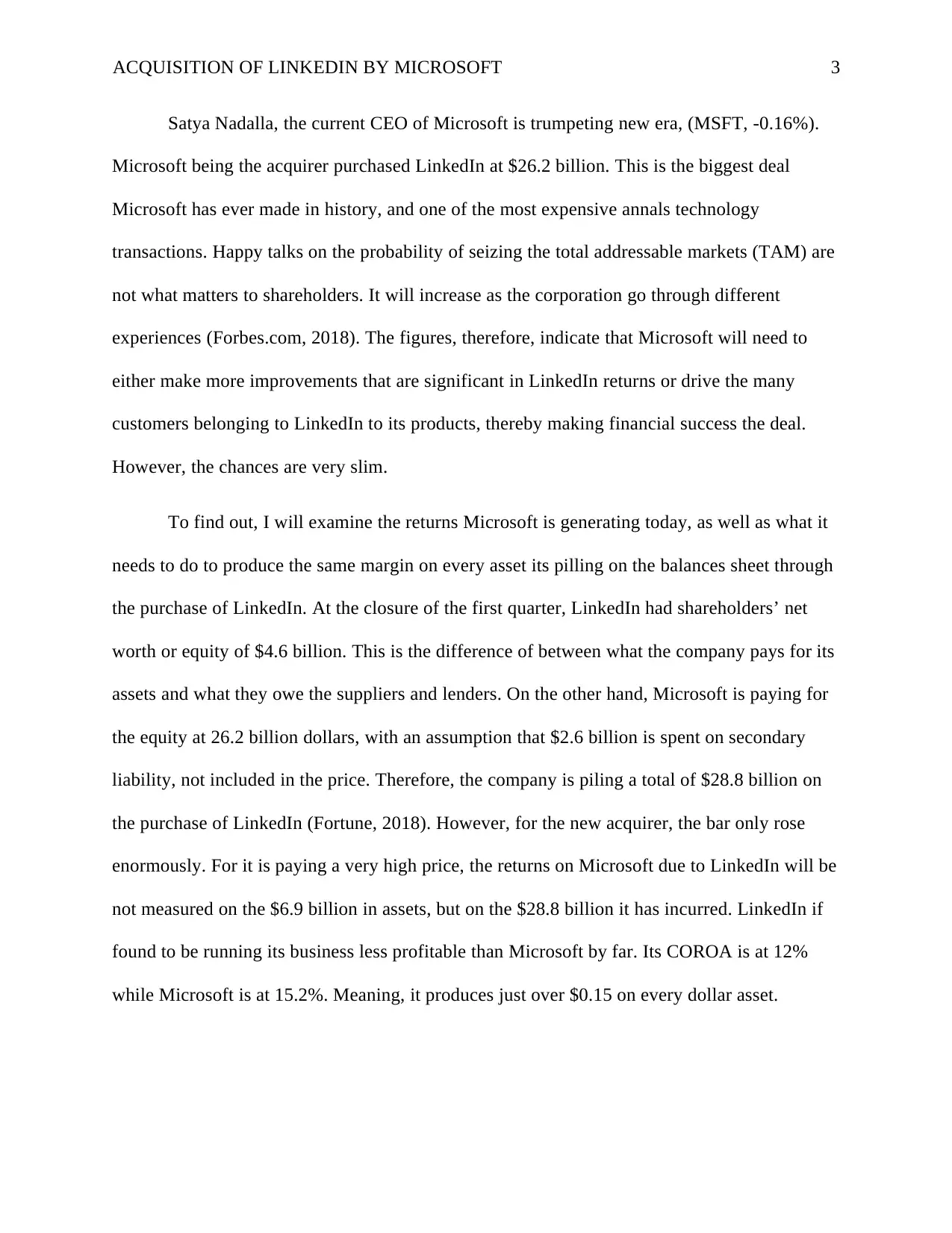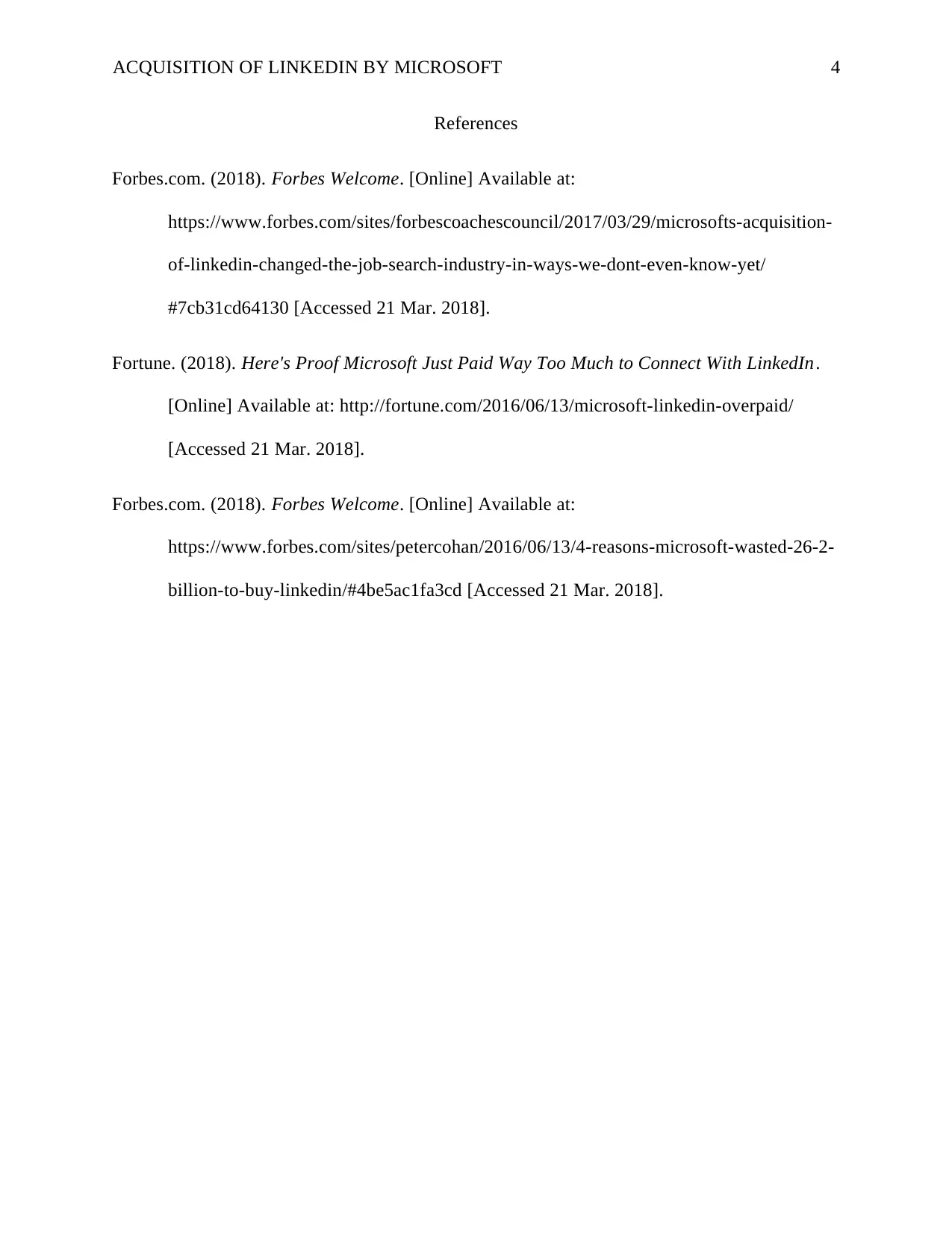Business Report: Microsoft's Strategic Acquisition of LinkedIn
VerifiedAdded on 2021/04/24
|4
|815
|45
Report
AI Summary
This report analyzes Microsoft's acquisition of LinkedIn, a significant move valued at over $26 billion. It examines the strategic rationale behind the acquisition, including Microsoft's plans to integrate LinkedIn with its enterprise products like email and Skype to expand its social media platform and reach a wider audience. The report discusses the valuation of LinkedIn, the potential financial impacts, and the criticisms of the deal, comparing it with Microsoft's previous acquisition of Nokia. It explores the re-valuations and the perspective of Satya Nadella, Microsoft's CEO, and analyzes the financial metrics, including LinkedIn's shareholders' equity and its return on assets compared to Microsoft's. The report concludes by highlighting the challenges Microsoft faces in generating returns from the acquisition and the potential for financial success through integrating LinkedIn into its product ecosystem.
1 out of 4











![[object Object]](/_next/static/media/star-bottom.7253800d.svg)